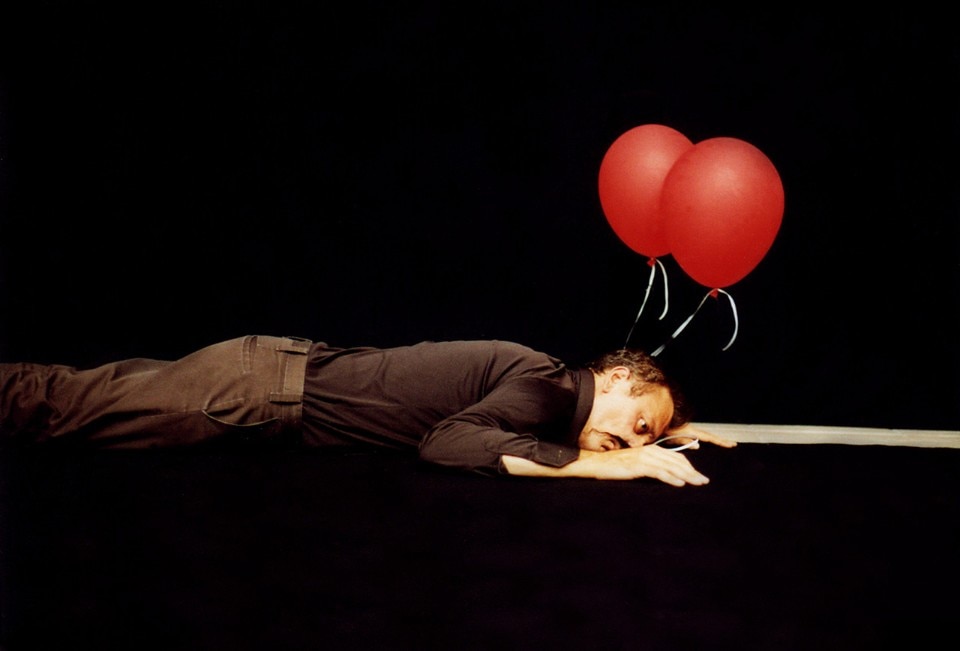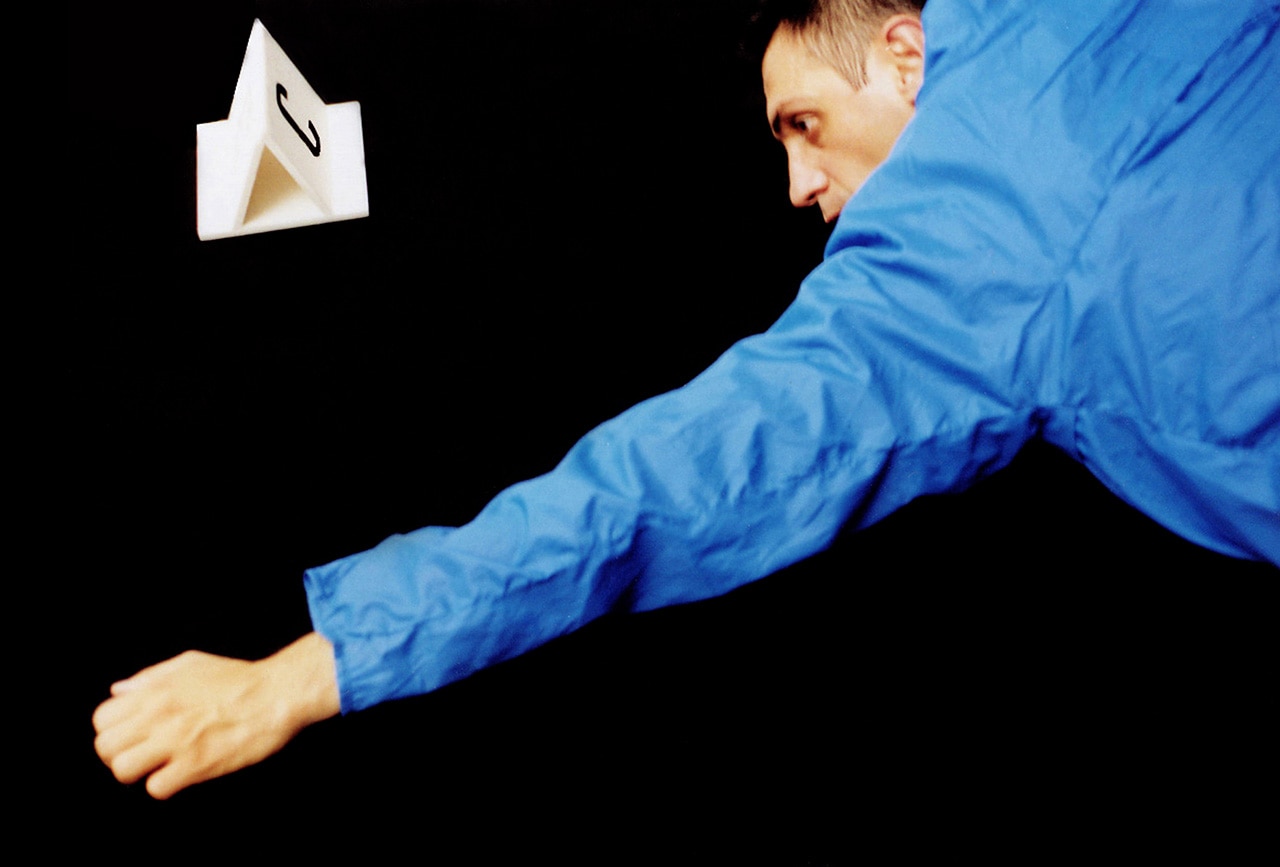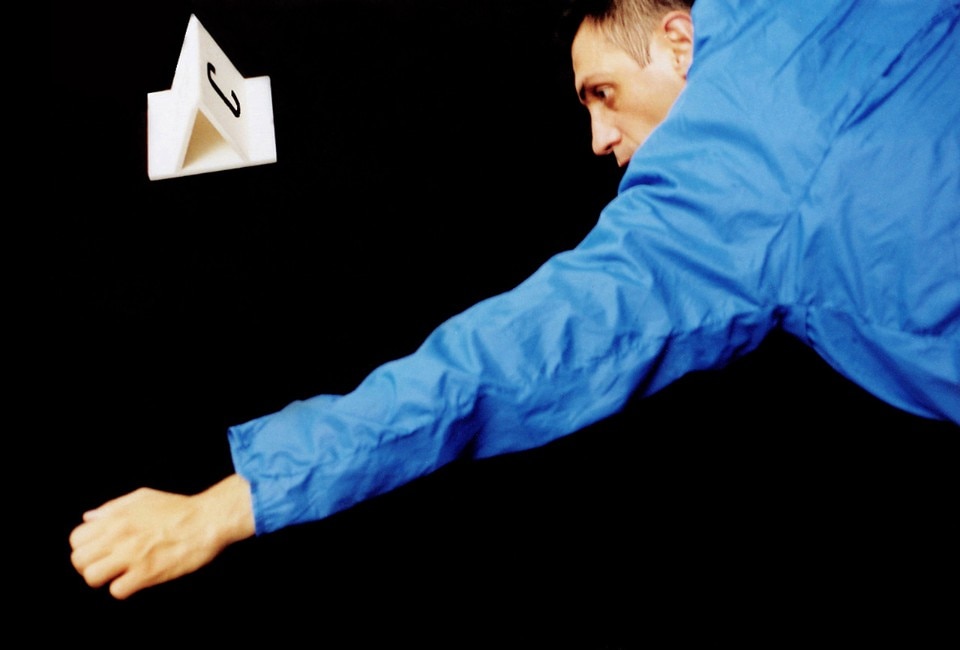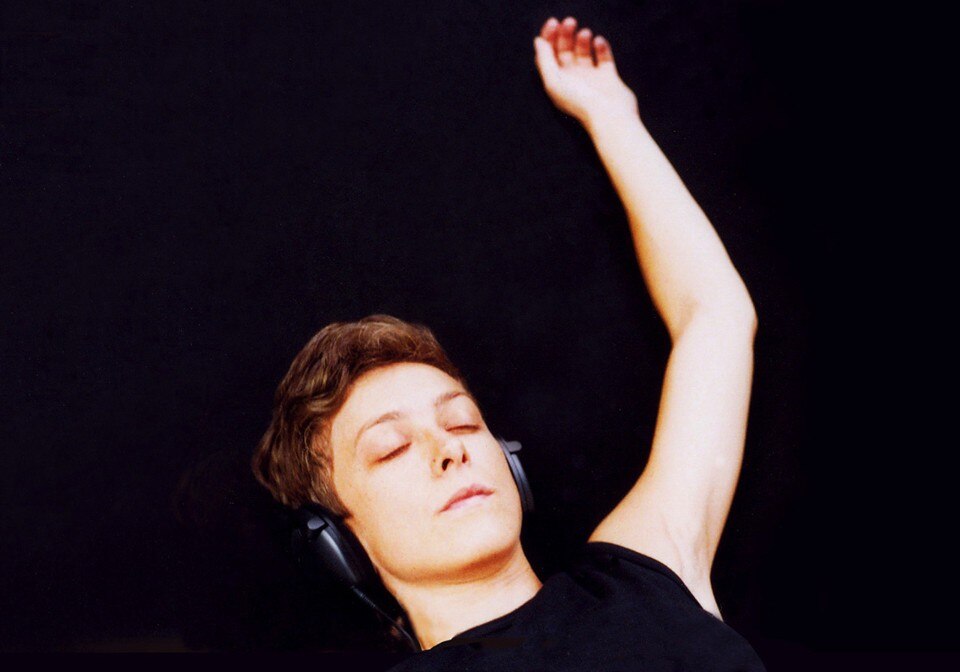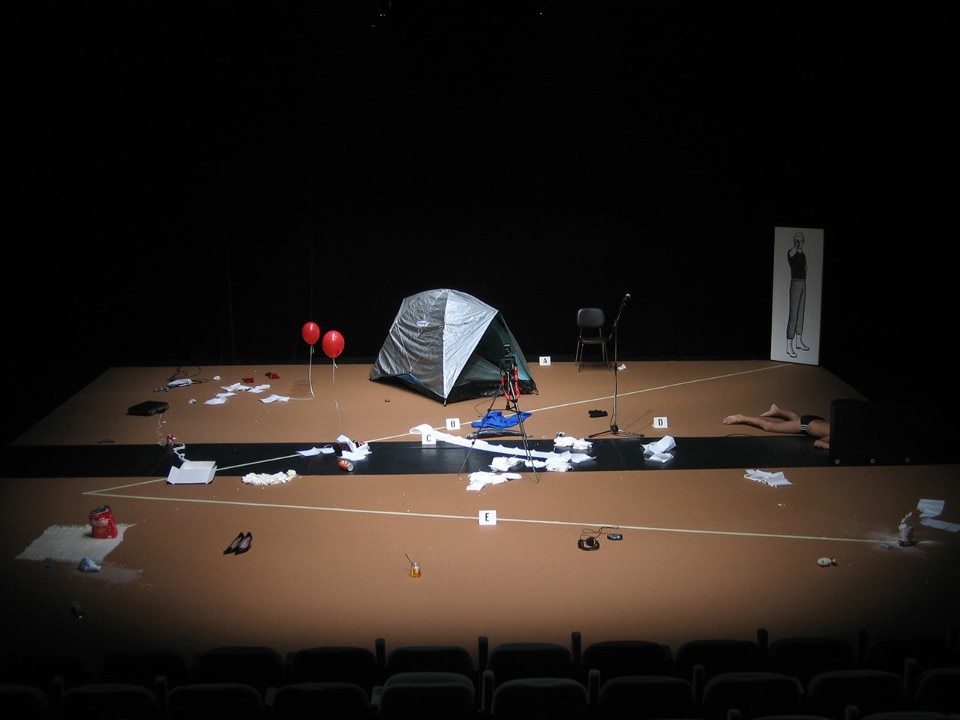Describing what happens - while it happens, after it has happened or before it happens - is in any case a kind of “failure”. Nevertheless, words are not always connected in a single direction. Such is the case with OTTO: word, number and sign, that if turned around indicates infinity. The decision to stage a performance again 15 years after its debut validates the notion that time also does not have just one meaning.
OTTO is the confirmation of the impossibility of representing anything. Watching, we try to give meaning to what happens, but for OTTO there is a single action (falling) that is repeated incessantly, seeking annulment. In the most “exhausted”[1] moment we discover that resisting abandoning the non-meaning, we ourselves represent a failure. Thus is revealed the game of mirrors that places in direct relationship the actor who falls and the viewer waiting for the fall.
The actor enters the stage, falls and gets up again. There is the sound of a thud and the subtle music transmitted by headphones connected to a CD player that seems exactly that of a number of years ago. Whatever the case, the one who falls remains like a trace indicating a homicide, because falling (above all on stage) is always a bit like dying. In fact the only figure who remains standing is the outline drawn by the man who takes aim with a gun.
But also death can have no meaning and the loss of the gesture is related to the presence of the observer. For the first time since its debut, traces remain in space of the action, even when the actors are no longer there. In this way, it is highlighted that every act is unrepeatable and destined to disappear but has however always consequences.
[1] Reference to the title of the book AA.VV. Kinkaleri 2001-2008. La scena esausta, (edited by Kinkaleri), UBUlibri, Milano, 2008
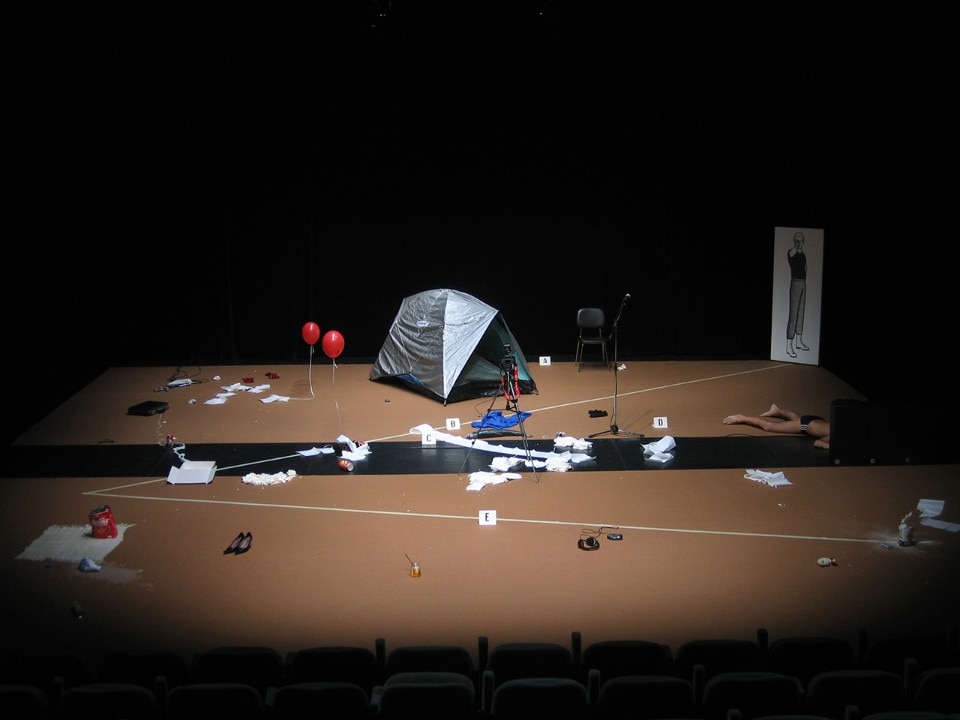
The more the scene is composed though objects and actions, the more the meaning decomposes. It is a continuous rebounding: from one part to the other in space, from the actors to the viewers and vice versa. Any description is useless and cannot do anything other than bring back the words of the authors (Kinkaleri/Matteo Bambi, Luca Camilletti, Massimo Conti, Marco Mazzini, Gina Monaco, Cristina Rizzo): “<OTTO> is a void, now, a suspension of the the world, avoiding looking, I already know everything, we are at the maximum value of the crude representation of the world that is offered to the indecent representation of itself”.
Obviously, behind this declaration it is easy to trace the voice of Antonio Artaud (1896-1948) who spoke of the dual nature of theatre and it is no coincidence OTTO is a palindrome. Without however going into the thoughts of Artaud I stop and realise a mistake I have made, I have overlooked the two marks present in the title,
Now I see how verbal language itself is a space that has to be filled and that there are precise directions to follow. If we turn one of the two marks round and we put them next to each other, the two arrows become “forward” and “rewind” like the symbols on the buttons of an obsolete VHS recorder.
Was the idea to stage <OTTO> again after 15 years perhaps already written in the title? Or is it a case once more of a failure, in as much the actors will no longer be themselves: Filippo Baglioni, Chiara Bertuccelli, Andrea Sassoli are the new interpreters of a score never really written that Kinkaleri have decided to repeat. In any case, the difference in those who inhabit the space is not the only reason for which <OTTO> is not simply another performance or the impossible act of bringing a memory back to life. <OTTO> is action that is repeated in space and time. More than going forwards and backwards the only button on this hypothetical VHS that we want to press is that of “pause” but we can't find it. In fact it is impossible to subvert the act of falling by suspending the bodies in mid air, like Robert Longo did with his giant drawings in the series Men in the Cities.

We are once more before a failure: while going forwards and backwards are actions physically and mentally possible, our body and our mind can never put themselves on pause. The banality of these observations is not immediate, because language in a lateral sense has accustomed us to considering movement as a necessary condition and falling as an obstacle. <OTTO> is not an ode to this repeated gesture, in fact at times overturning can be just as damaging and dominant. <OTTO> is the impossible possibility of putting oneself on pause, to suspend and surprise by the fact that standing does not exist just as falling does not exist and very probably the reality that cross us like a projectile does not exist.
- Exhibition title:
- Il Museo Immaginato. Storie da trent’anni di Centro Pecci
- Opening dates:
- 22 September 2018 – 25 June 2019
- Performance title:
- <OTTO>
- Artists:
- Kinkaleri
- Dates:
- 21 September h 19.30/ 30 September h 19.30 / 5, 12, 19 October h 21.30/ 7, 14, 21 October h 18
- Curator:
- Cristiana Perrella
- Venue:
- Centro per l’arte contemporanea Luigi Pecci
- Address:
- viale della Repubblica 277, Prato


